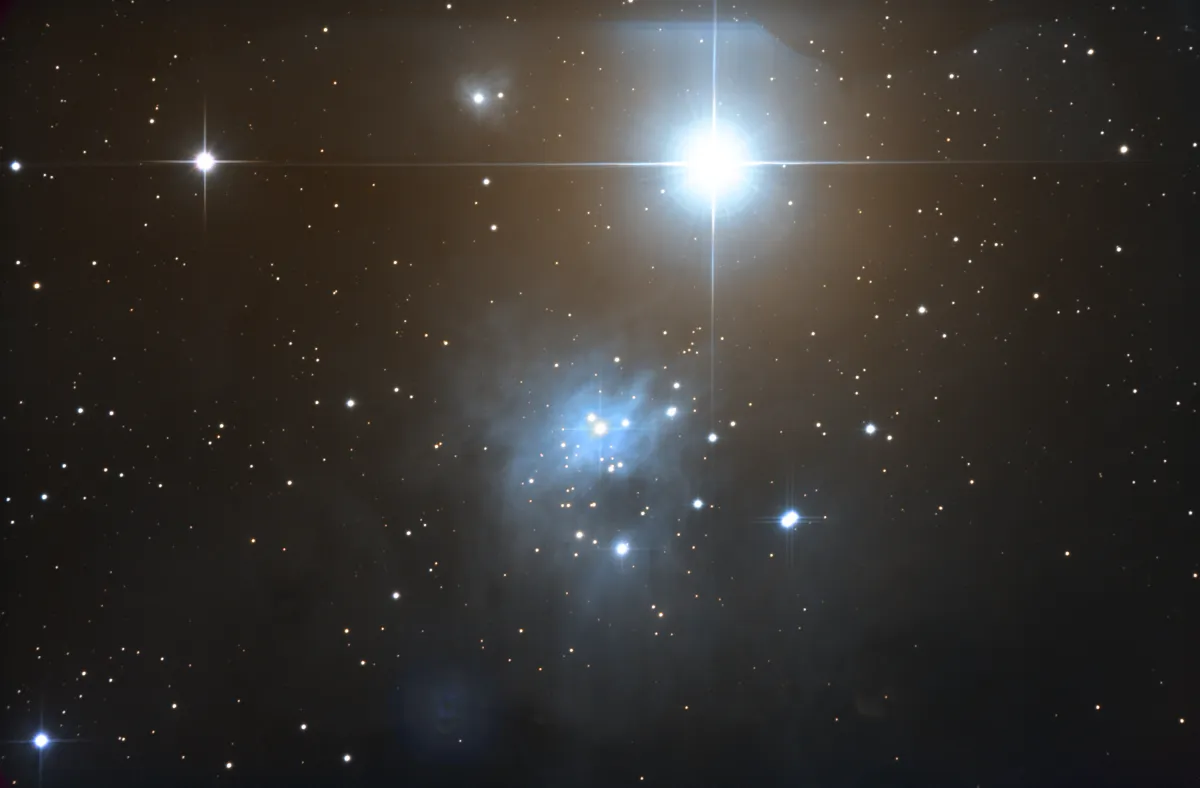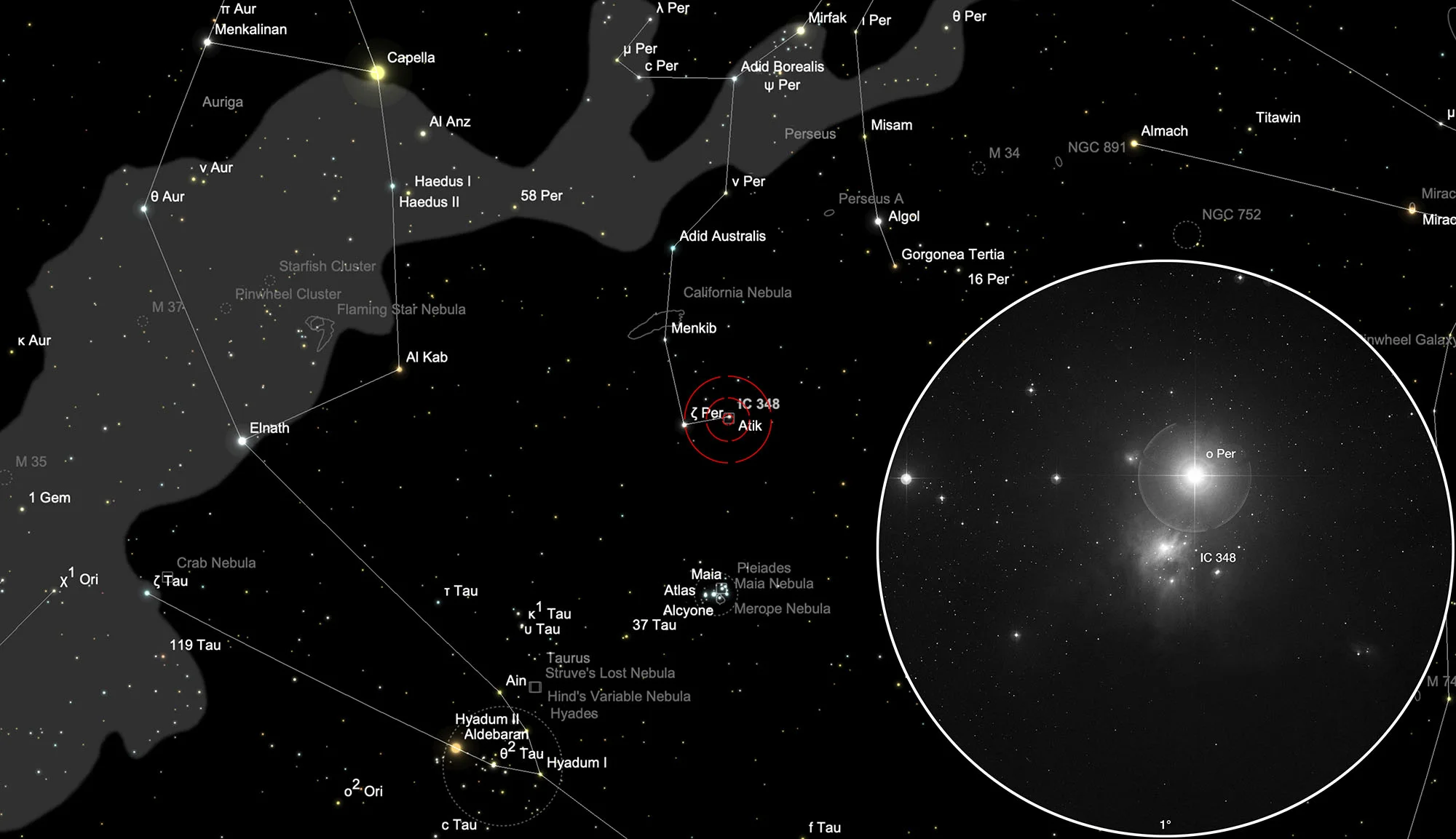IC 348: Cluster with Nebulosity

History
On 1 December 1866, the American astronomer Truman Safford discovered an open star cluster surrounded by a nebula. In his notes he noted the following footnote: «Loose star cluster with nebula». But John L. E. Dreyer overlooked this note when he was preparing his first «Index Catalog» [314] for 1895 and only mentioned the nebula in his description for entry IC 348. So it happened that Dreyer in his second «Index Catalog» [315] from 1910 the discovery of Edward Barnard from 6 December 1893 with the description «Stars 8th size in weak, extremely large nebula» with IC 1985 as a double entry for the same object. [196]
Physical Properties
IC 348 is a young star cluster and star formation region. The cluster contains about 400 stars spread over an area of about 20 arcminutes. The most massive stars are the double star system BD +31°643, which are of the spectral type B5 and have an angular distance of 0.6 arcseconds to each other. About half of all stars have a circumstellar disk from which a planetary system could be formed. The age of the cluster is estimated to be two million years. The distance is about 315 parsecs, around 1000 light years. [356, 357]
| Name | RA | Dec | Type | vMag | Dim | MD | Dreyer Description | Identification, Remarks |
|---|---|---|---|---|---|---|---|---|
| IC 348 | 03 44 34.1 | +32 09 47 | OCL (IV2pn) | 7.3 | 10 | 0.394 | pB, vL, vgbM | IC 1985; OCL 409; LBN 758; CED 20 |
| IC 1985 | 03 44 34.1 | +32 09 47 | dup | 7.3 | 10 | 0.394 | * 8 in F, eL neb | IC 348; OCL 409; LBN 758; CED 20 |
Finder Chart
The open star cluster with galactic nebula IC 348 is located in the constellation Perseus near the star Atik (ο Persei). On 21 November it is in opposition to the Sun and crosses the meridian at local midnight. The best time to observe is July to April, when the circumpolar constellation is highest at night.
